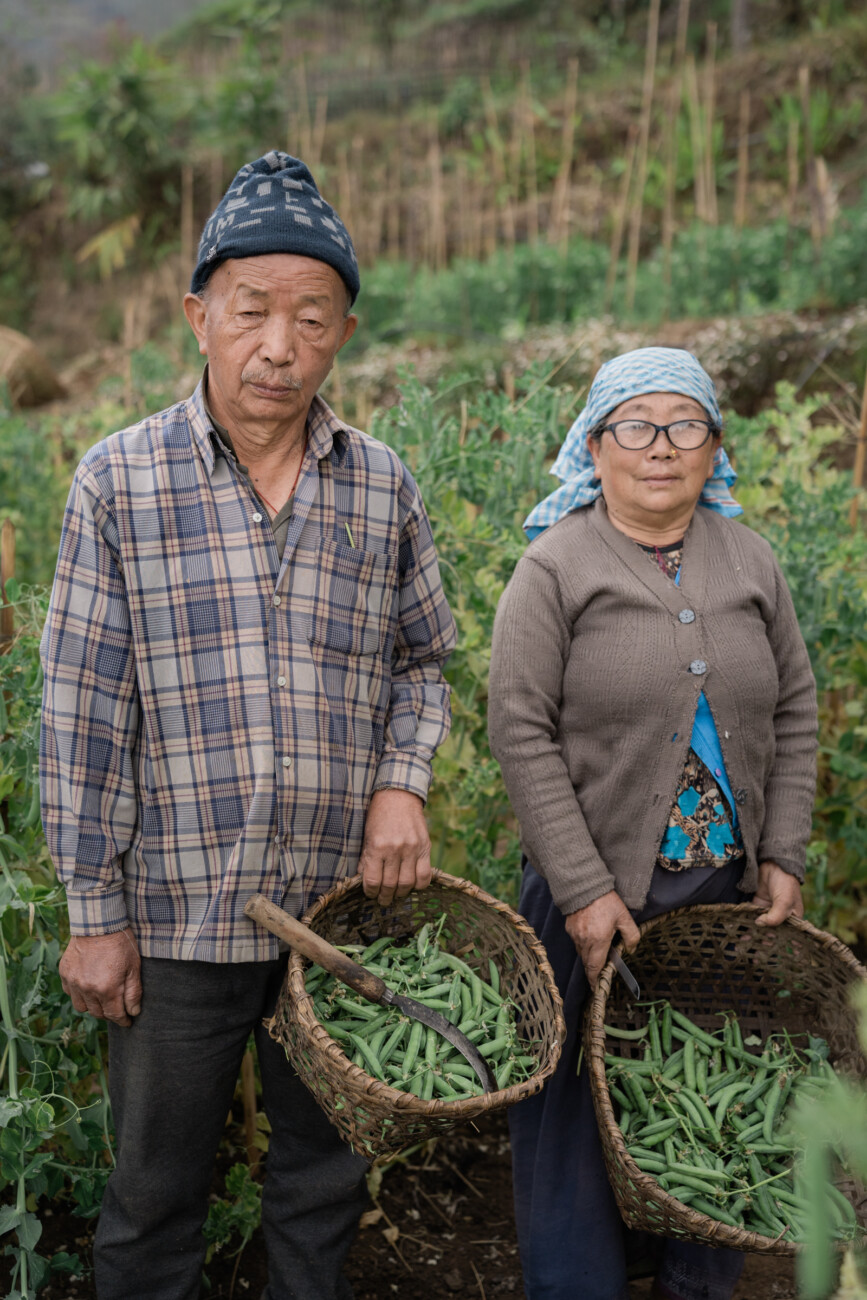
Introduction
"Our ancestors (purkha) lived here and we’ve engaged in potato cultivation for generations," said Sadaman Limbu, a 72-year-old farmer from Lower Okhrey in west Sikkim, as he gently plucked peas in his field during a cold morning in March. In between long pauses, he narrated the process of cultivating and trading potatoes: "Earlier we had to carry the harvest ourselves to Sombaria bazar and Rimbik Bazar, but now that is no longer necessary with roads right next to our houses and with traders coming to pick them directly from the fields." Limbu lives in Lower Okhrey, west Sikkim, with his wife, son, and daughter-in-law. Each family member contributes to farming, which includes potatoes, peas, cabbage, radish, and squash. But it is potatoes that are grown in the largest quantity in his field, and it is potatoes that he depends on for his livelihood. Nearly all farmers in the village of Lower Okhrey in west Sikkim depend upon potato harvests for their livelihood, and their lives revolve around its cultivation throughout the year.
Sombaria potatoes are one of the many fruits and vegetables that are part of the large basket of Sikkim’s organic agricultural produce. Growing up in the small valley town of Jorethang, about two-hours drive from Sombaria, Sombaria potatoes were a delicacy I thoroughly relished in a variety of dishes. The potato’s stern firmness when boiled and its succulent taste when cooked into any kind of dish, has made it part of the cultural food system in Sikkim. It is more expensive than other kinds of potatoes in the market. Yet what is interesting about Sombaria ko aloo (as it is famously called) is that the potatoes are not grown in Sombaria town but in the villages located above it, in the villages of Lower Okhrey, Upper Okhrey, Ribdi, Bharing, Tareybhi, Puretar and Saprey Nagi. The communities that inhabit these villages are Lepcha, Subba, Bhutia, Limboo, Gurung, Sherpa, and Dalits.
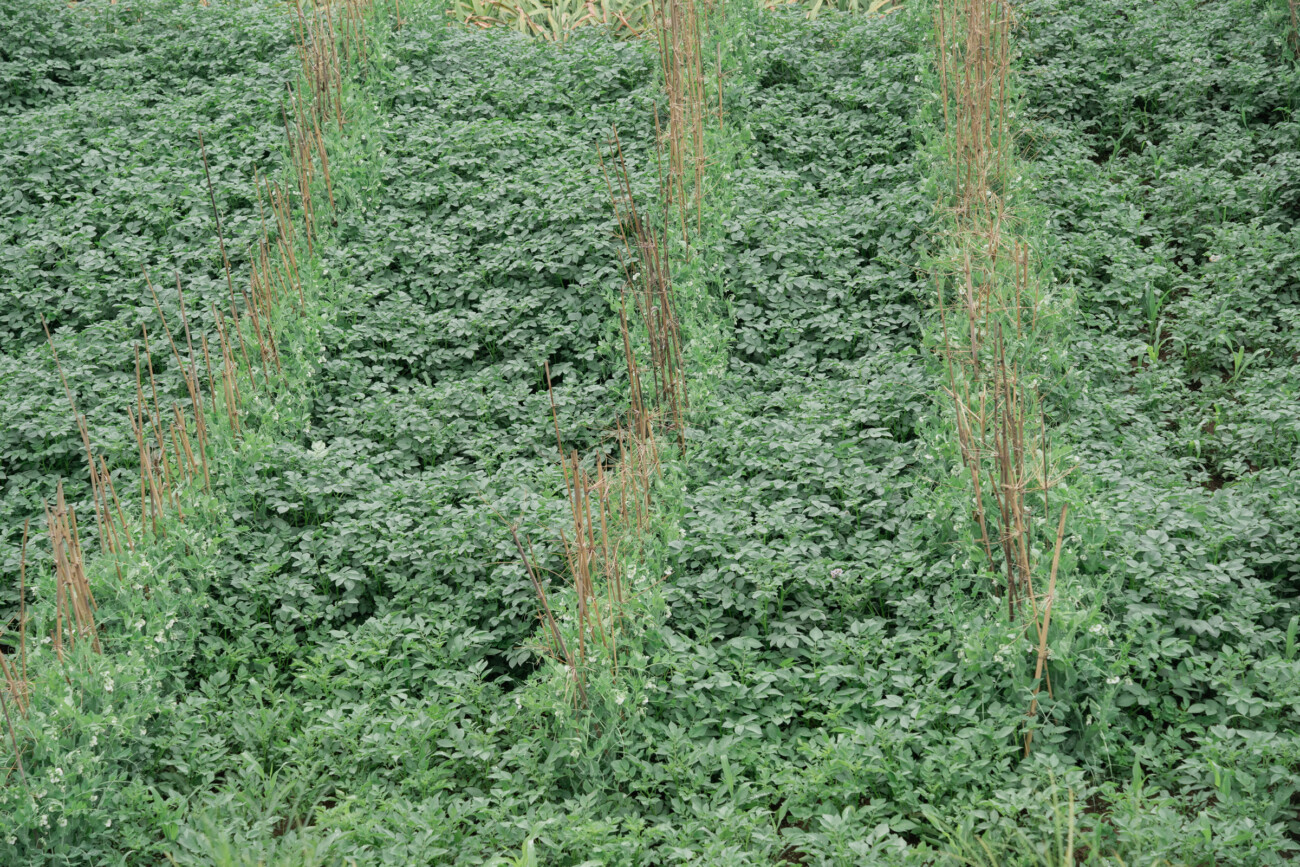
Sombaria is a small hill town located in west Sikkim at an altitude of 3,700 feet. The name comes from its famous haat bazar, held every Monday. "The haat bazar is Sombaria," Lobsang Bhutia, a 52-year-old farmer from Lower Okhrey, told me. Sombar in Nepali means Monday; hence, Sombaria derives its name from its haat, which was held and continues to be held every Monday.
In 2016, Sikkim was declared the world's first "fully organic" state at a conference on Sustainable Agriculture & Farmers' Welfare in Gangtok, presided over by Prime Minister Narendra Modi and then Chief Minister Pawan Chamling. Subsequently, in 2018, the state was awarded the Future Policy Gold Award by UN Food and Agriculture (FAO). These events were a culmination of the state government’s agenda, undertaken in 2003 to banning use of chemical fertilisers and its import from neighbouring states. Furthermore, on August 15th 2010, the organic mission was formally launched by the government to transform Sikkim into a "fully organic state”.
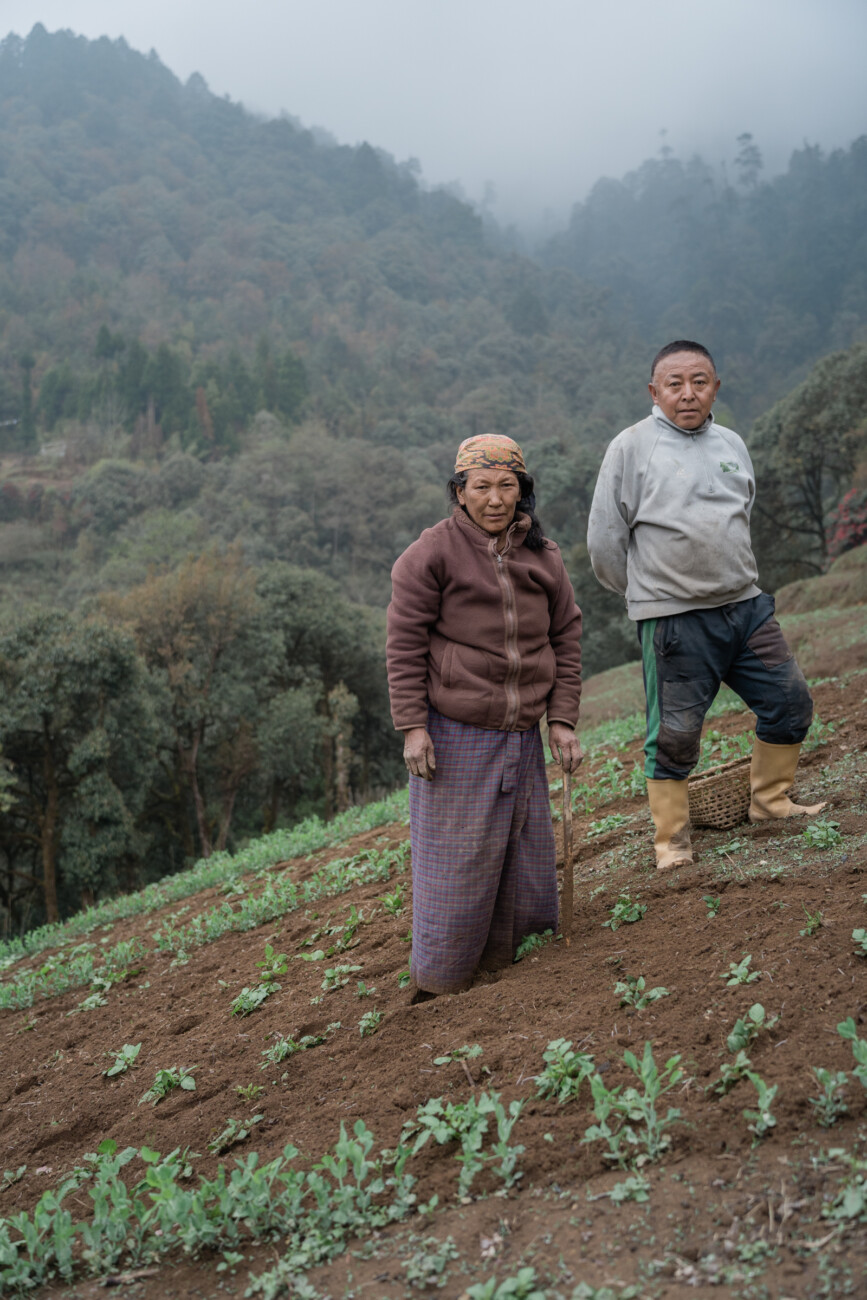
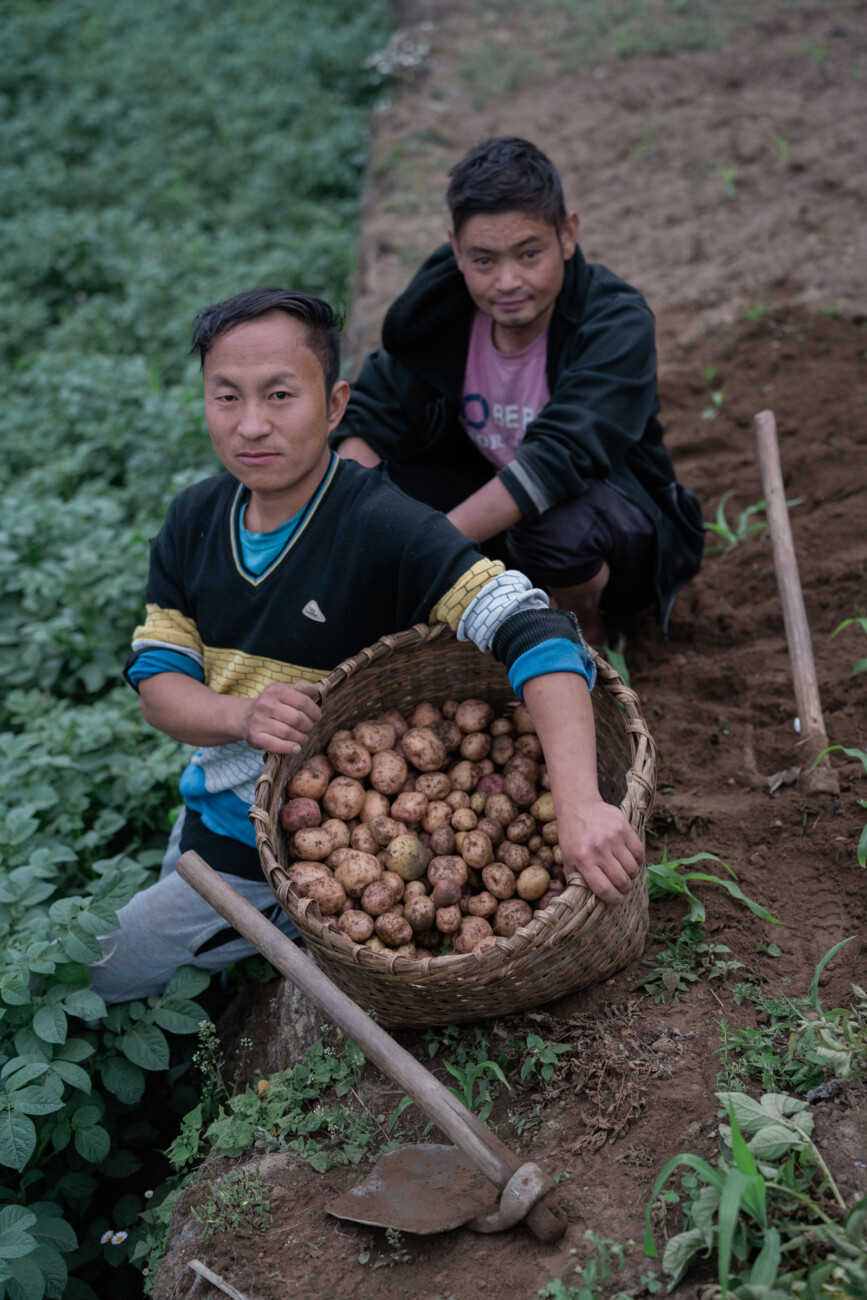
This article showcases how the famous Sombaria potatoes are cultivated and harvested, trying to bridge the gap between the production process and consumption (Barndt 19-50). The term "organic", in the case of Sombaria potatoes, is not just represented by the colour green, as the state government has actively tried to portray by painting government buildings green, but is represented by a rainbow of colours that speak of its history, changing circumstances of cultivation, and most importantly, the people whose lives revolve around its harvest. To that end, I try to unearth the long history of Sombaria, the trading town, its famous potatoes, and the social system that makes "organic" a reality in the hills of west Sikkim.
Potatoes originated from Peru, South America, from where it was first brought to Europe by the Spanish in 1570 (Mcneill 67-83). Although potatoes were first brought to India by the Portuguese, it was the British who actively promoted large-scale cultivation of potatoes in the Indian Subcontinent...
How did Potatoes reach the Sombaria hills?
Potatoes originated from Peru, South America, from where it was first brought to Europe by the Spanish in 1570 (Mcneill 67-83). Although potatoes were first brought to India by the Portuguese, it was the British who actively promoted large-scale cultivation of potatoes in the Indian Subcontinent, mainly for two reasons. First, to overcome the acute shortage of food which had caused grave crises such as the Bengal Famine of 1770, and second, they hoped that protein-rich potatoes would create a healthy population in British colonies (Earle 170-193). With the lack of written work, it is difficult to conclude how potatoes reached Sombaria, but the geography of the region does provide some clues.
Sombaria lies at the borders of Sikkim, Darjeeling (West Bengal), and Nepal. The opposite hill facing Sombaria is Darjeeling, and the two hills are separated by the Rambang river at the bottom. During my field visit, my hosts were disappointed with the gloomy weather, lamenting, "The hill on the other side can be seen clearly during sunny days. The scenery is beautiful." The hilly landscape is indeed surreal, for both have the same topography but are ruled by a different state governments with different socio-political histories (Shneiderman 289-312; Karlsson 321-331). Although the hills were and continue to be part of different political entities, there was and continues to be movement of people. Many farmers say that in the earlier days, they would take their potatoes to Darjeeling and Bijanbari (West Bengal) for trade. And during the cultivation season, many seasonal labourers from Nepal still come to work in the fields.
The coming of potatoes in the Sombaria hill can be understood within this nexus of mobility involving the long inter-mingling of people and trade in the region that overrides present-day borders (Sharma 74-96). According to historian Julia Fine, the first record of widespread administrative effort to encourage cultivation of potatoes in India occurred in the Bengal presidency in 1793 (6). Therefore, it is clear that the potatoes arrived in the Sombaria hills from its southern borders with present-day Bengal. The geographical location of Sombaria, at the borders of Darjeeling (a colonial hill station) and Sikkim (a buffer frontier of the British to maintain trade with Tibet) and the dependence of the farmers on potato harvest today, showcases what Fine calls the "uncoordinated” effort of colonial botany, diet, and ideology in South Asia (6-10).
For people in Sikkim, Sombaria town evokes memories of a hilly landscape and a long trading history (Pachuau 82-135), and the taste of Sombaria potatoes unites its consumers irrespective of caste, religion, and other man-made differences.
Sombaria Bazar
Even today, Sombaria bazar continues to be a hub for trade facilitated by its haat held every Monday. The geographical location of Sombaria is crucial in understanding its emergence as a trading center. It is located at the border of Bengal and Nepal, and the nearby towns of Jorethang, Namchi, and Gezing. Over the years, the town has seen many changes in terms of infrastructure. Suk Bahadur Subba, a 68-year-old farmer from Lower Okhrey, told me that earlier there were only a few houses made of chadar (tin roof) in Sombaria. Today, it is a bustling town with its own schools and shops selling not just vegetables but also clothes, foods, etc. Yet fragments of its long history remain as old architecture (in very fragile conditions) can be seen in-between new tall buildings. For people in Sikkim, Sombaria town evokes memories of a hilly landscape and a long trading history (Pachuau 82-135), and the taste of Sombaria potatoes unites its consumers irrespective of caste, religion, and other man-made differences (Sutton 209-223; Kikon 376-387).
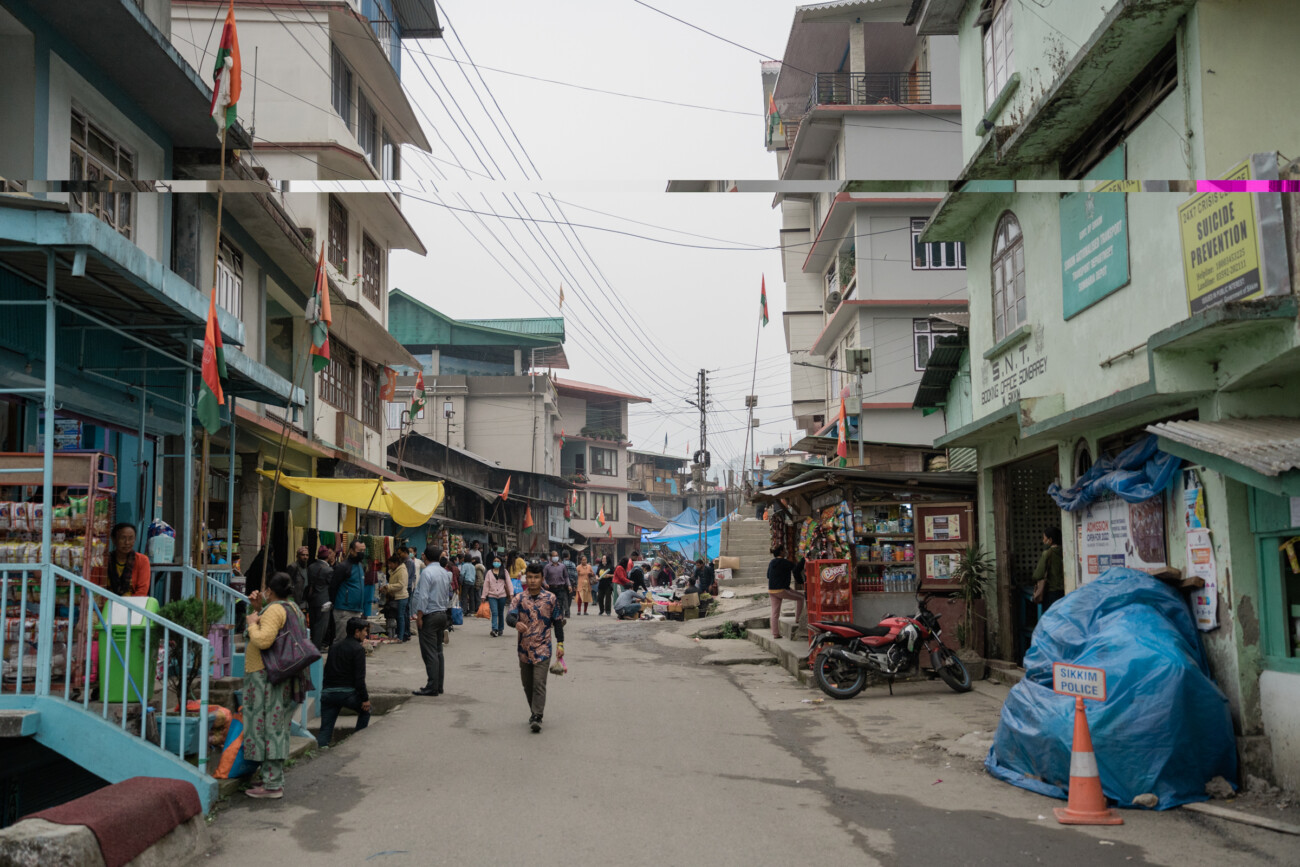
The farmers in the Sombaria hills will disagree with anyone who says that cultivating potatoes is easy and less time-consuming in comparison to other crops and vegetables (Mcneill 67-83). Preparing the soil for sowing the seed takes a month or more, depending on the size of the land.
Growing Potatoes
"Taste" was the answer I received from Lopsang Bhutia when I asked him the difference between Sombaria potatoes and potatoes from other regions. Bhutia reiterated what most consumers in Sikkim say about Sombaria potatoes: "Our potatoes are tastier". According to Bhutia, the organic methods employed by the farmers are one of the reasons that contribute to the potatoes' fine taste. They do not use chemical fertilizers. Instead, they make use of dry tea leaves and egg shell mixture, kaharani, or wood ash, and animal manure. Additionally, as part of the organic Sikkim drive, the government has taught the farmers to practise methods such as vermicompost– ganeula ko maal –to improve the quality of their produce.
The farmers in the Sombaria hills will disagree with anyone who says that cultivating potatoes is easy and less time-consuming in comparison to other crops and vegetables (Mcneill 67-83). Preparing the soil for sowing the seed takes a month or more, depending on the size of the land. Potatoes are cultivated twice a year: the first during December, which is harvested in March-April, and the second during March-April, which is usually harvested in October. It takes at least six months from the time the seeds are sown to the time the potatoes are harvested, and farmers must spend their days ensuring the plant receives the proper amount of water. If the water is not mixed well with the soil, the plants are eaten away by ants. Furthermore, the unpredictable weather has a negative impact on the potatoes. Heavy rainfall may cause the potatoes to rot. During sunny days, the potatoes have to be watered well, and during the winter, snowfall may have adverse effect on the entire season's harvest.
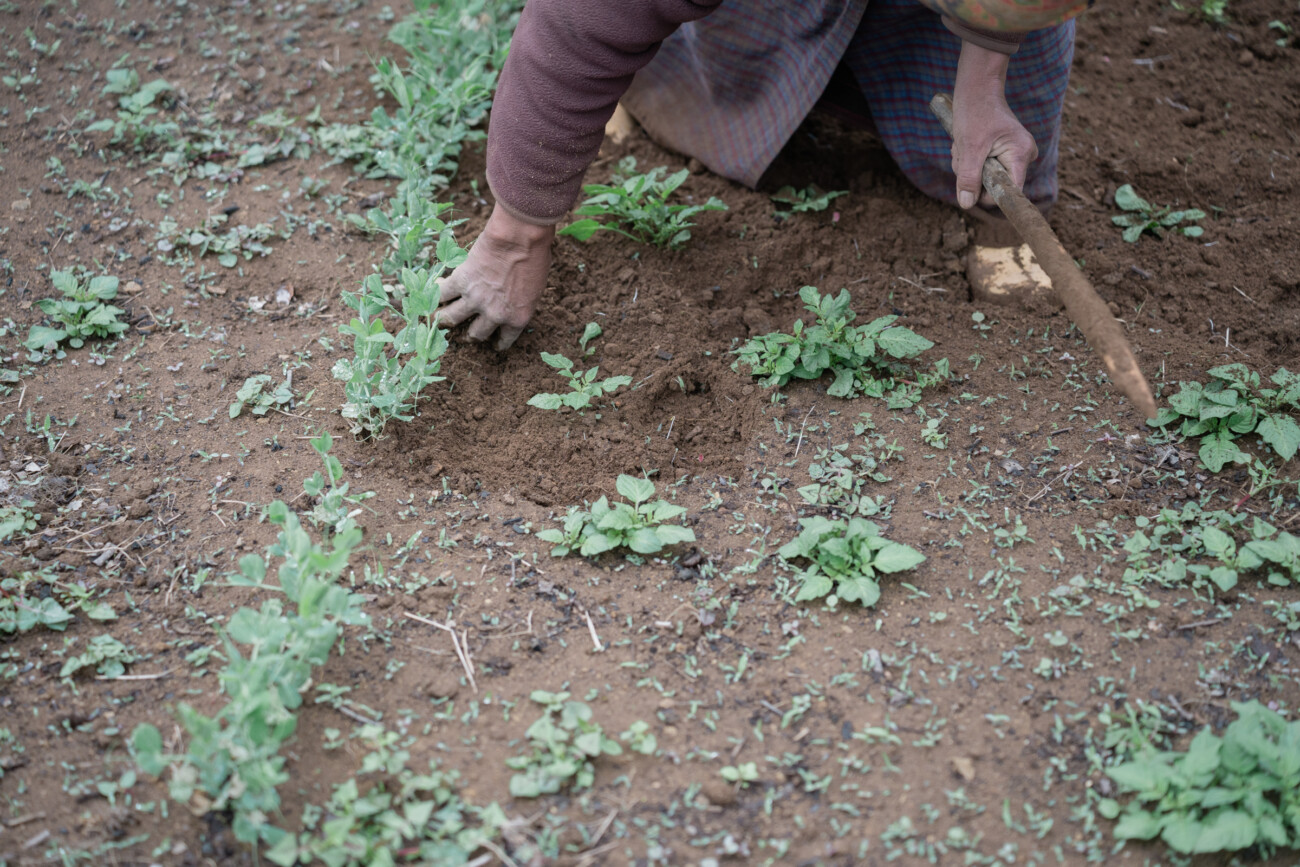
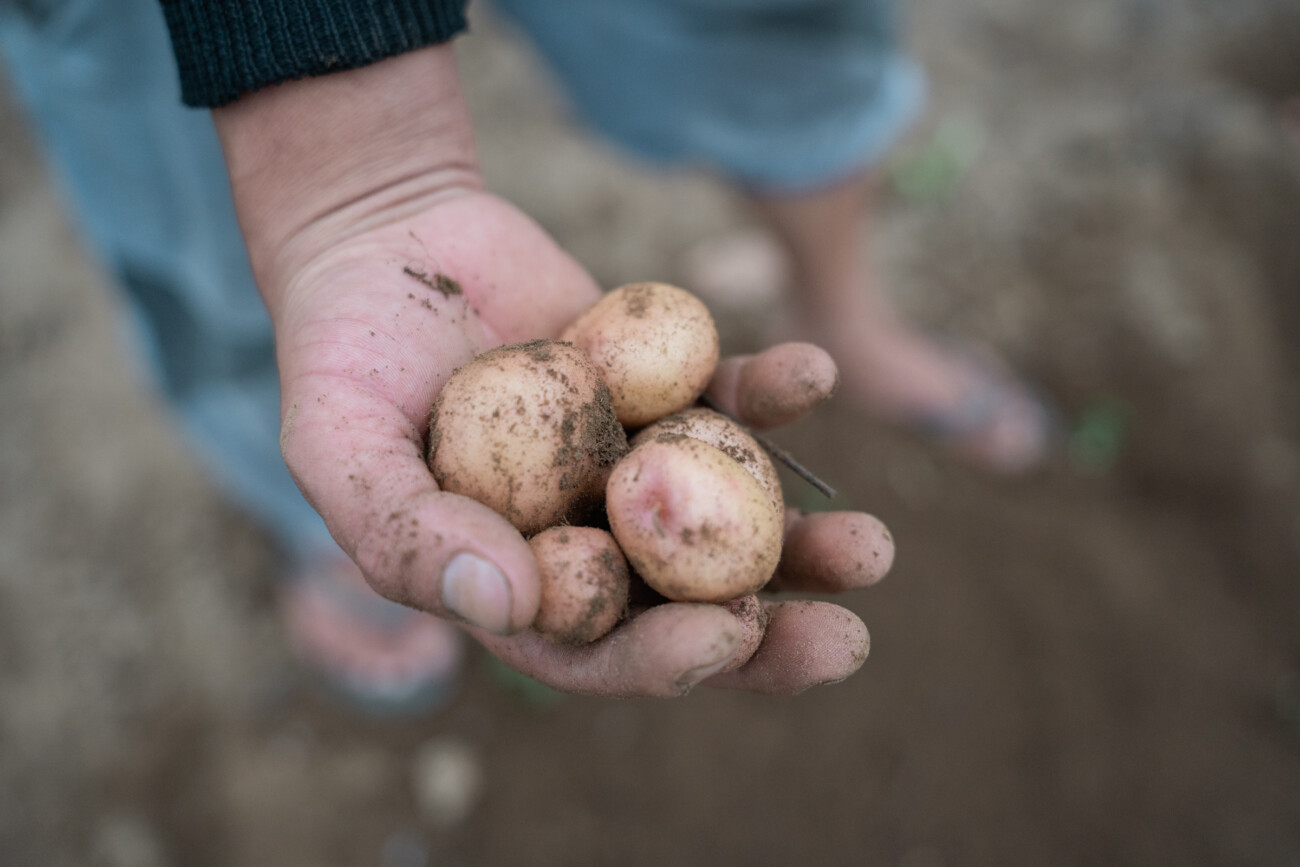
Potato varieties naturally dry out after a few years (masincha) and new varieties of seeds have to be purchased. Many farmers nostalgically spoke about earlier varieties of potatoes which are no longer found, such as Sumdorje, Thare aloo, Khukre joti, and Phulange aloo. The farmers' entire lives revolve around its cultivation throughout the year, and they have to work day in and day out to ensure their efforts yield the expected results. Yet cultivating potatoes has been part of their lives for generations. In recent years, the social world of Sombaria potato farmers has seen many unexpected challenges due to changing climatic and environmental conditions (Alkon and Vang 389-411).
Trade and Livelihood
Suk Bahadaur Subba, who was introduced to me as the person with the widest knowledge about farming in lower Okhery, told me that potatoes not only helped him run his family but also sustained his participation in the society, for it was potatoes he carried as gifts during marriages, funerals, and other social events. Although Sombaria potatoes are part of the food-system in Sikkim, the impetus for its cultivation is the rich profits and not for any emotional or familial reasons. While selecting the seeds for cultivation, for example, those variety are selected which yield huge quantities. Narmaya Biswakarma, a 48-year-old farmer from Lower Okhrey told me that although she also sells peas, spinach etc, they are not as profitable as potatoes. The lives of the farmers depend both on market price and climatic conditions.
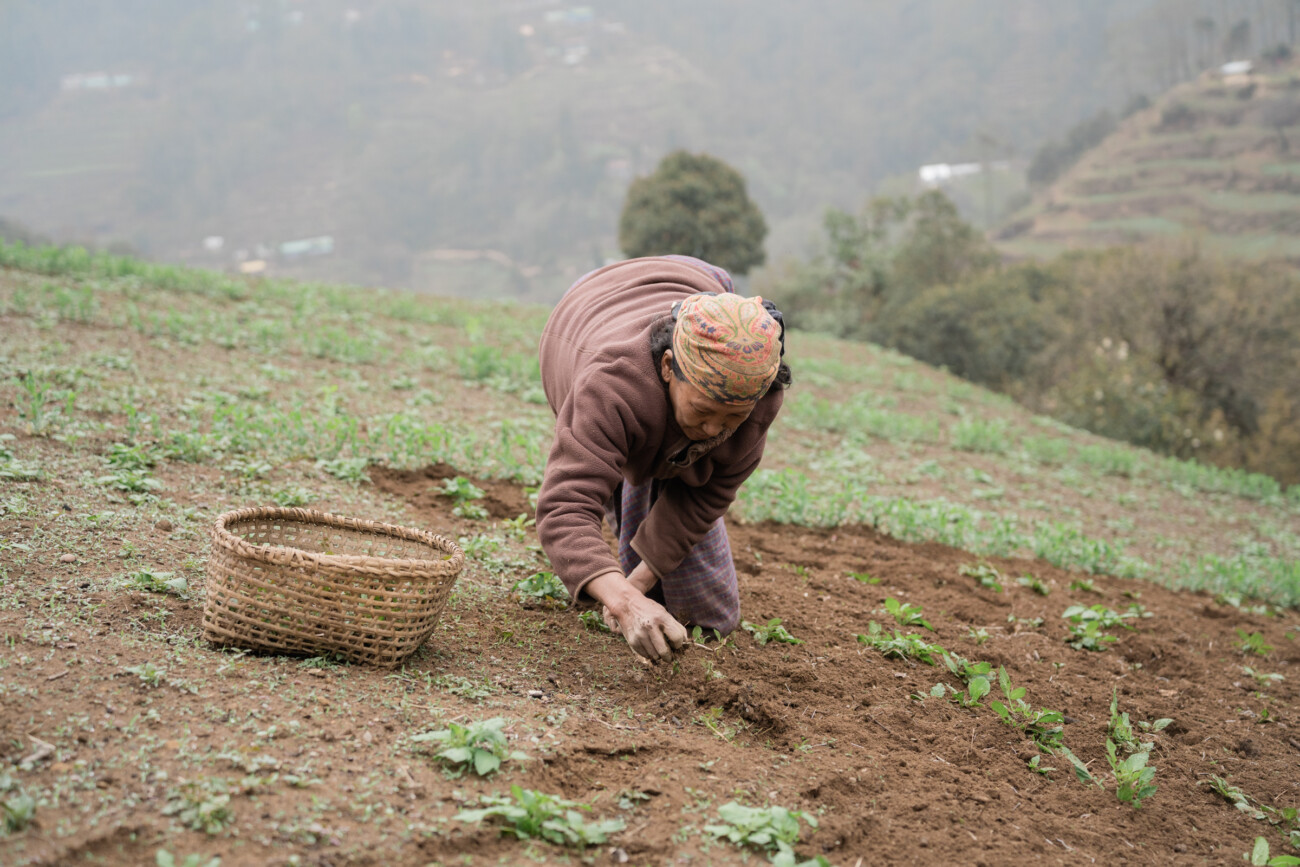
Over the years, with improved road connectivity, the trading of potatoes has become easier. Earlier lack of proper roads or transportation meant farmers had to carry potatoes on their backs all the way to Bijanbari, Darjeeling, and Rimbik Bazar for trade. Now, with roads reaching right next to their field, this backbreaking labour is no longer necessary. Today, local traders pick up the produce from the field and take it to Soreng, Gezing, Gangtok, Namchi, and other towns in Sikkim. Sometimes individual buyers purchase vegetables directly from the farmers. But while trading has become easier, the quantity of harvests have decreased.
Farmers unanimously agreed that there are three major challenges to potato cultivation today: wild animals, cost of cultivation, and availability of water.
Challenges
Farmers unanimously agreed that there are three major challenges to potato cultivation today: wild animals, cost of cultivation, and availability of water. Farmers complained about the increasing cost of seeds, their inability to pay high labour wages, the inadequate distribution of water, but most importantly, the attack on their fields by wild animals.
Today, one of the reasons why potato cultivation has drastically decreased is because of the continuous attack by wild animals such as wild boars, monkeys, deer, porcupines, and bears. Among all the animals, it is wild boar in particular that causes maximum damage to the field. Lopsang Bhutia says that the harvest used to be "choko" or pure before, but now wild boars sometimes damage the entire field in a single night, causing huge losses to the farmers. This has even forced many people to give up farming. The forest department gave the farmers fences in order to stop wild boars, but this hasn’t helped because the animal digs into the ground and enters the fields anyway. Further, the threat is not only directed towards the food but also the farmers themselves, who sometimes come face to-face with the animals.
The attack by wild animals in this area has begun very recently. When I asked Bhutia why this is so, he said that it's because there’s nothing left in the forest anymore, and since the forests themselves do not have fruits and vegetables like they used to, this has forced wild animals to come to the fields in search of food. The farmers we interviewed narrated harrowing instances of sighting bears and wild boars in their fields, sometimes even during the day.
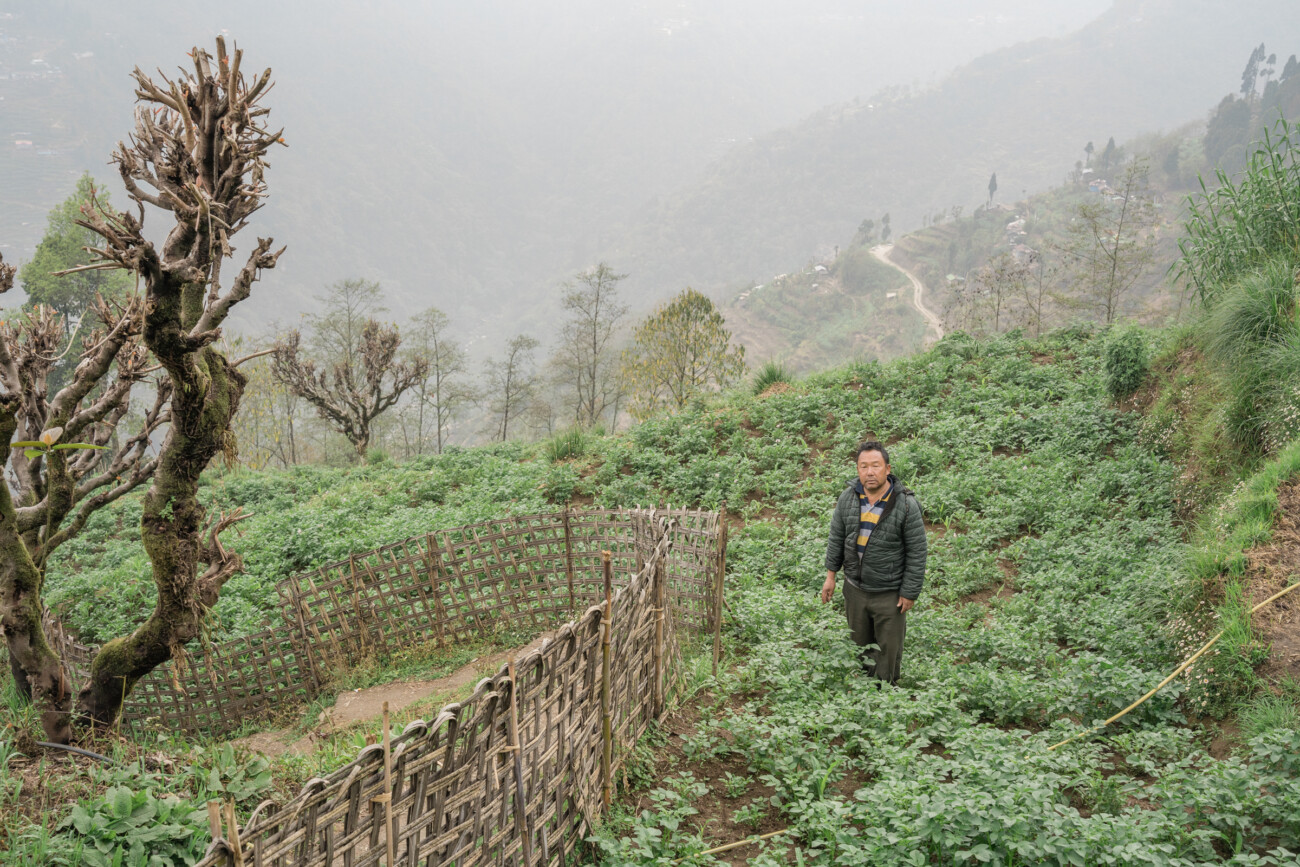
Bhutia's field has often been foraged by wild animals causing him huge losses, Lower Okhrey, 2022
Rethinking Sustainability
In western countries, organic farming movements began as a response to rapid changes in agricultural practices due to urbanization and industrialization, and adopting organic farming methods meant going back to the pre-industrial period, in order to build a healthy human-environment relations (Vogt 9-29; Lockeretz 1-8). In Sikkim, organic farming and consuming organic foods did not imply going back to traditional methods since traditional methods have always been in practice. In 2003, when the state government imposed a ban on the use of chemical fertilizers, the state's use of chemicals was 10 kg of fertilizers per hectare in comparison to the national average of 90 hectares (Meek and Anderson 653). Sikkim's low use of chemicals since the beginning of the organic mission has led some to call the region "organic by default" (Meek and Anderson 660).
Society in Sikkim is still not alienated from the food system. We know where our food comes from. In populated towns, small vegetable patches within households are still prevalent, and so are visits to haat bazaars. My mother has been buying vegetables from the same vendor for years, and she knows which produce is fresh during a particular season, where it is grown, and even maintains a long friendship with the vendor. It was this friendship that guaranteed a steady supply of vegetables to our kitchen during the long months of lockdown.
In spite of all the success with organic farming methods in Sikkim, changing environmental conditions have begun to affect farming which requires us to rethink what we mean by “sustainable farming” in the context of Sikkim. A government report on organic Sikkim policy reads: "The fragile ecosystem in Sikkim hills demand sustainable farming practices without depletion of natural resources. It is therefore advantageous for Sikkim to go into Organic system of farming keeping in view of protection of the soil from degradation, protection of environment and ecology and healthy living of the people for generations" (State Policy on Organic Farming 1).
The four main agendas of the organic farming mission were nutrient management; pest management; disease management; and moisture management (State Policy on Organic Farming 9). The policies to make Sikkim an organic state were mainly aimed at enhancing the fertility of the soil through non-use of chemicals, which in-turn would protect the state’s rich biodiversity. Further, consuming organic foods would promote a healthy diet among the people and also protect the environment.
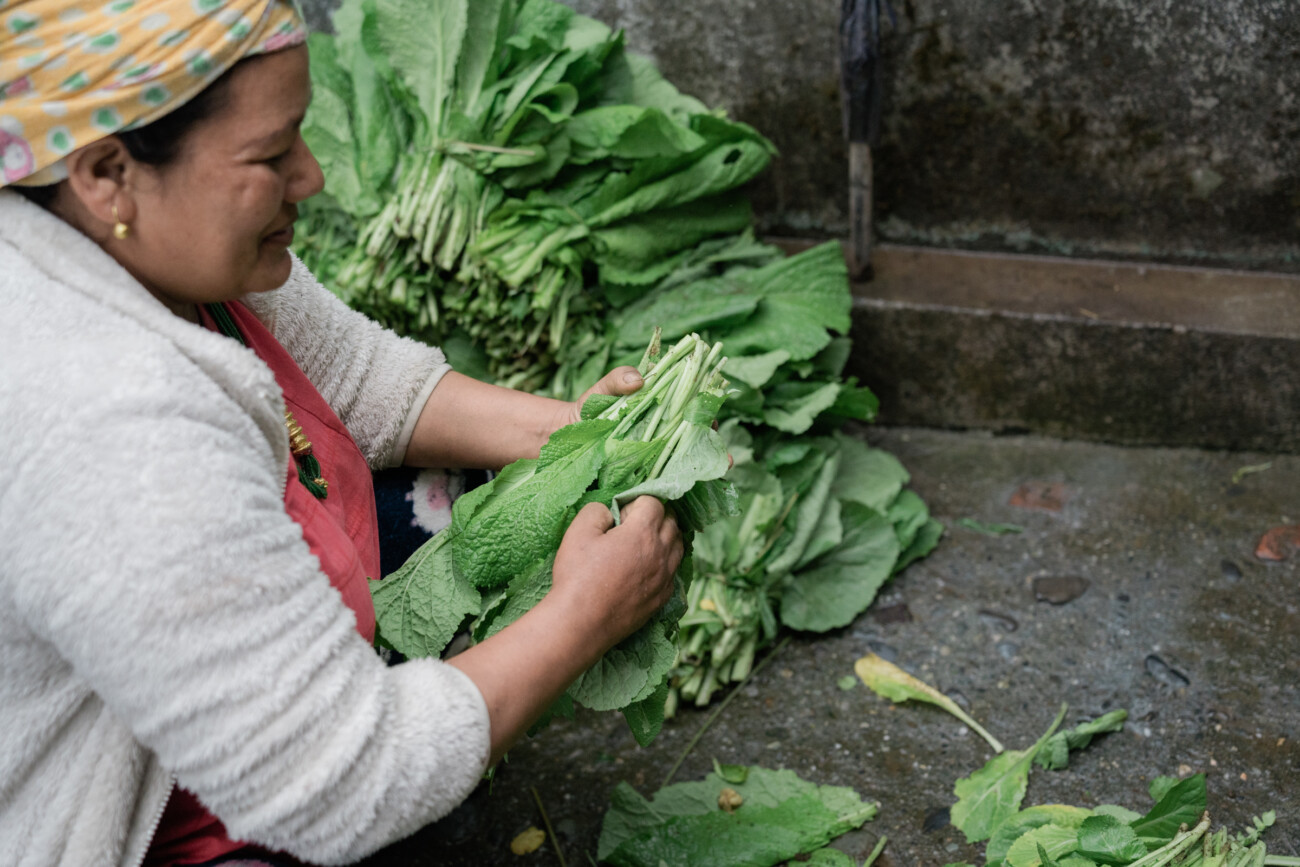
Although the banning of chemical use and other organic practices has been successful, accrediting the state with the “organic state” status, what are the reasons for the emerging animal-human conflict? The reasons for the emerging human-animal conflict in Sombaria hills require further research and is beyond the scope of this article. However, research on similar animal-human conflict conducted in other states of northeast India points to rapidly changing landscape and the shrinking availability of forest areas as a major factor for this conflict (Barua 1462-1478). It is thus safe to conclude that focusing solely on soil fertility and the consumption of organic foods is not enough to conserve Sikkim’s natural resources and ecology ( Zeng et al. 159-174).
Conclusion
Today, the farmers in the Sombaria hills are not optimistic about whether the younger generations will continue with farming. "Dukha cha, kheti, aloo ko"—potato cultivation is difficult, they say. This Dukha needs to be understood within the larger environmental and ecological changes occurring across Sikkim, which is rapidly changing the landscape of the region today, and further leading to emerging environmental issues (Robbins 13-24; Walker 363-369).
The story of Sombaria potatoes show that Sikkim’s "organic" history is much longer than the recent accolades the region has received at national and international levels.
Sombaria potatoes have had a long history since colonial times, tied to the trading town of Sombaria; a history older than the launch of the organic mission in Sikkim twenty years ago. Farmers for generations have harvested potatoes, experiencing changing cultivation and trading methods while adapting to new innovation, policies, and challenges. Monetary profits from potatoes are the major reason why farmers continue to cultivate potatoes in the Sombaria hills. The cold climate and the organic methods employed by the farmers while cultivating potatoes is the reason behind the potatoes distinct taste. And closely tied to the taste of Sombaria potatoes is the memory of Sombaria town and its haat bazar.
The story of Sombaria potatoes show that Sikkim’s "organic" history is much longer than the recent accolades the region has received at national and international levels. What is new is the emerging environmental crises such as human-animal conflict, changing climate, and water scarcity; and it is the latter that requires immediate attention and policy intervention so that we can preserve a secure environment and ecology for future generations.
Works Cited
Alkon, H. Alison, and Dena Vang. “The Stockton Farmer’ Market: Racialization and Sustainable Food Systems.” Food, Culture & Society, vol. 23, no.3, pp. 155-172.
Bardnt, Deborah. Tangled Routes: Women, Work, and Globalizaton on the Tomato Trail. Rowman & Littlefield Publishers, 2007.
Barua, Maan. “Volatile ecologies: towards a material politics of human-animal relations.” Environment and Planning, vol. 46, 2014, pp. 1462-1478.
Earle, Rebecca. “Food, Colonialism and the Quantum of Happiness.” History Workshop Journal, no. 84, 3 September 2017, pp. 170-193.
Fine, Julia. “Civilized Man Cannot Live Without Cooks”: Food and Empire in Colonial India. Unpublished Undergraduate Thesis. Harvard College, Cambridge, Massachusetts, 2019.
Galvin, S. Shaila. Becoming Organic: Nature and Agriculture in the Indian Himalaya. Yale University Press, 2021.
Karlsson, K. Bengt. “Evading the state: Ethnicity in Northeast India through the Lens of James Scott”. Asian Ethnology, vol. 72, no. 2, 2013, pp. 321-331.
Kikon, Dolly. “Bamboo Shoot in Our Blood: Fermenting Flavors and Identities in Northeast India.” Current Anthropology, vol. 62, 2021, pp. 376-387.
Lockeretz, William. “What Explains the Rise of Organic Farming?.” Organic Farming: An International History, edited by William Lockeretz, CABI publishing, 2011, pp. 1-8.
Maaker, D. Eric. “Who Owns the Hills? Ownership, Inequality, and Communal Sharing in the Borderlands of India. Asian Ethnology, vol. 79, No. 2, 2020, pp. 357-375.
Mcneill, H. William. “How the Potato Changed the World’s History.” Social Research, vol. 66, no. 1, Spring 1999, pp. 67-83.
Meek, David, and Colin R. Anderson. “Scale and the politics of the organic transition in Sikkim, India.” Agroecology and Sustainable Food Systems, vol. 44, no. 5, pp. 653-672.
Pachuau, Joy. Being Mizo: Identity and Belonging in Northeast India. Oxford University Press, 2014.
Robbins, Paul. Political Ecology: A Critical Introduction. Second edition, John Wiley &Sons, 2012.
Sharma, Jayeeta. “Himalayan Darjeeling and Mountain Histories of Labour and Mobility.” Darjeeling Reconsidered: Histories, Politics, Environments, edited by Townsend Middleton and Sara Shneiderman, Oxford University Press, 2018, pp. 74-96.
Shneiderman, Sara. “Are the Central Himalayas in Zomia? Some scholarly and political considerations across time and space.” Journal of Global History, vol. 5, 2010, pp. 289-312.
Sutton, E. David. “Food and the Senses.” Annual Review of Anthropology, vol. 39, 2010, pp. 209-223.
State Policy on Organic Farming, Government of Sikkim. Sikkim Organic Mission, FS&AD and H&CCD Departments Government of Sikkim, Krishi Bhawan, Tadong, East Sikkim, http://scstsenvis.nic.in/WriteReadData/links/Sikkim%20Organic%20Policy%202015-401740061.pdf
Vogt, G. “The Origins of Organic Farming.” Organic Farming: An International History , edited by William Lockeretz, CABI publishing, 2011, pp. 9-29.
Walker, Peter. “Political Ecology: Where is the politics?” Progress in Human Geography, vol. 3, no. 3, 2007, pp. 363-369
Zeng, Lily., Deepti Chatti, Chris Hebdon, and Michael R. Dove. “The Political Ecology of Knowledge and Ignorance.” Brown Journal of World Affairs, vol. XXII, no. II, Spring/Summer, 2017.
Acknowledgement
This article wouldn’t have been possible without the help and guidance of Praveen Chettri, who was an observant and patient companion during fieldwork, asking the right questions with his years of knowledge and experience in working with grassroot societies. Our hosts in Lower Okhrey, Narmaya Biswakarma, Dhan Bahadur Biswakarma, Manita Biswakarma, and Sandika Biswakarma, warmly welcomed us into their homes and helped us complete our fieldwork in a short period of time. Dr. Mona Chettri’s valuable comments on the earlier draft helped me find clarity in writing and in my arguments. Furthermore, Prava Rai’s unwavering support and long discussions on current environmental issues in Sikkim have assisted through the fieldwork and in the writing process. Lastly, Roderick Wijunamai, Julia Fine, and Ayushi Nirola were kind and generous with reading suggestions on food history and anthropology, giving new directions to this project, which was initially meant to be a simple narrative on potato cultivation in Sombaria.
PHOTO GALLERY
(CLICK TO ENLARGE)
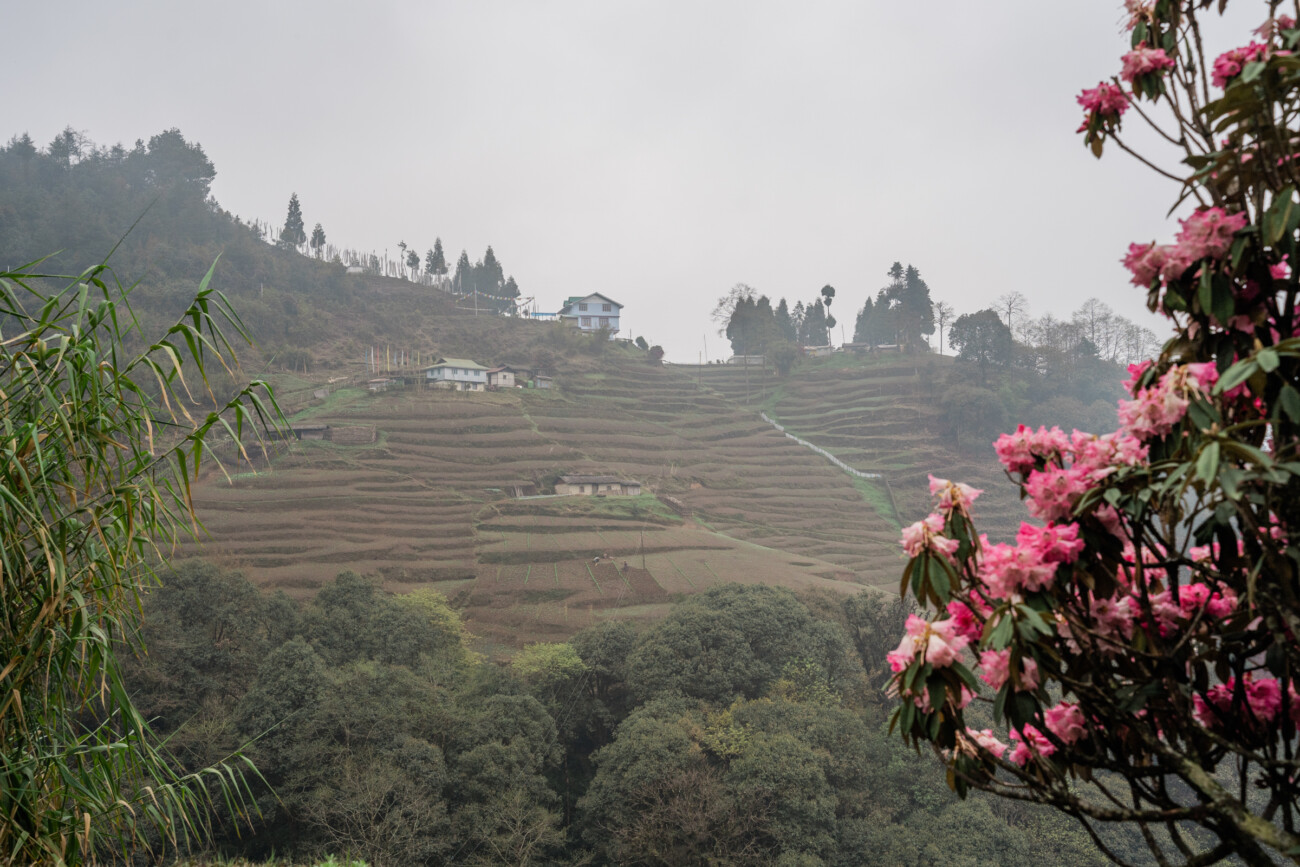
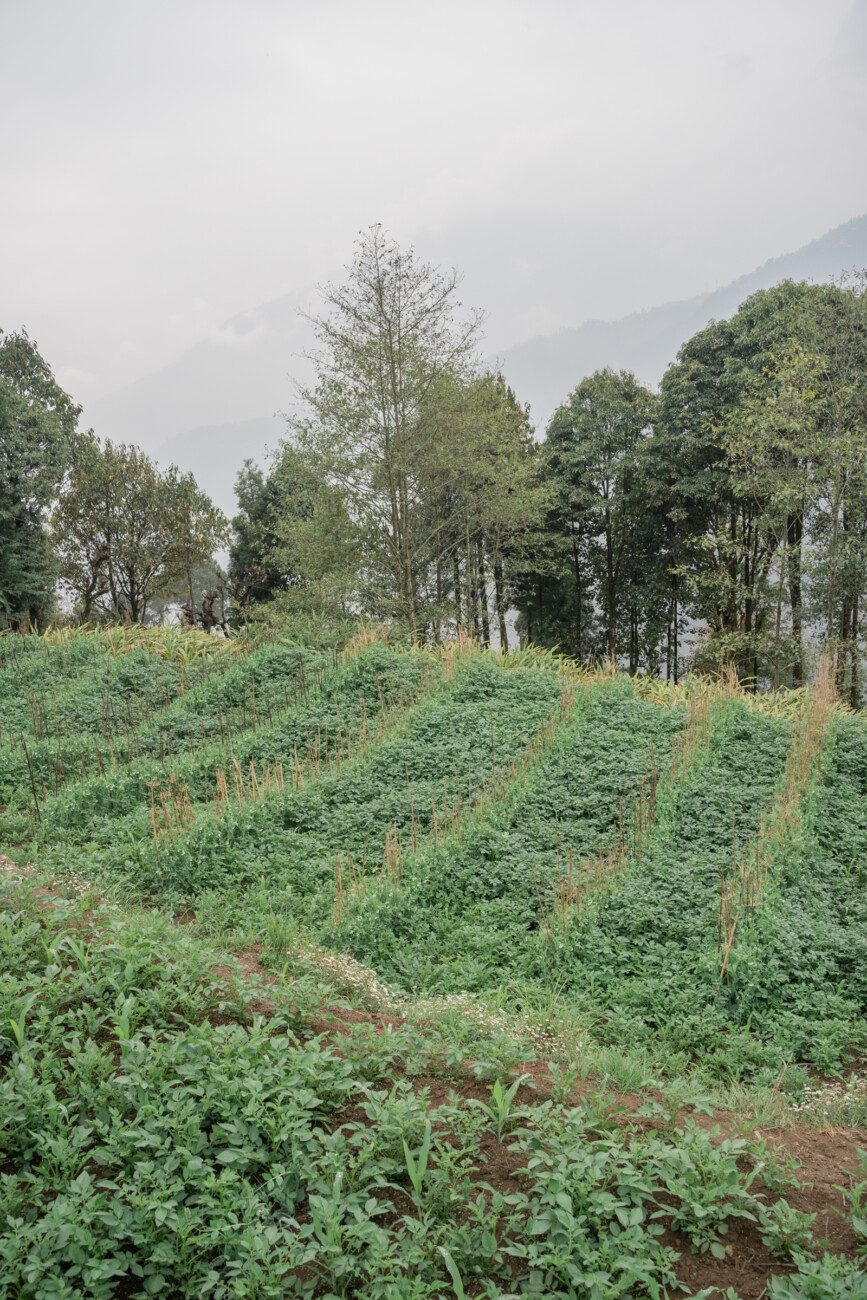
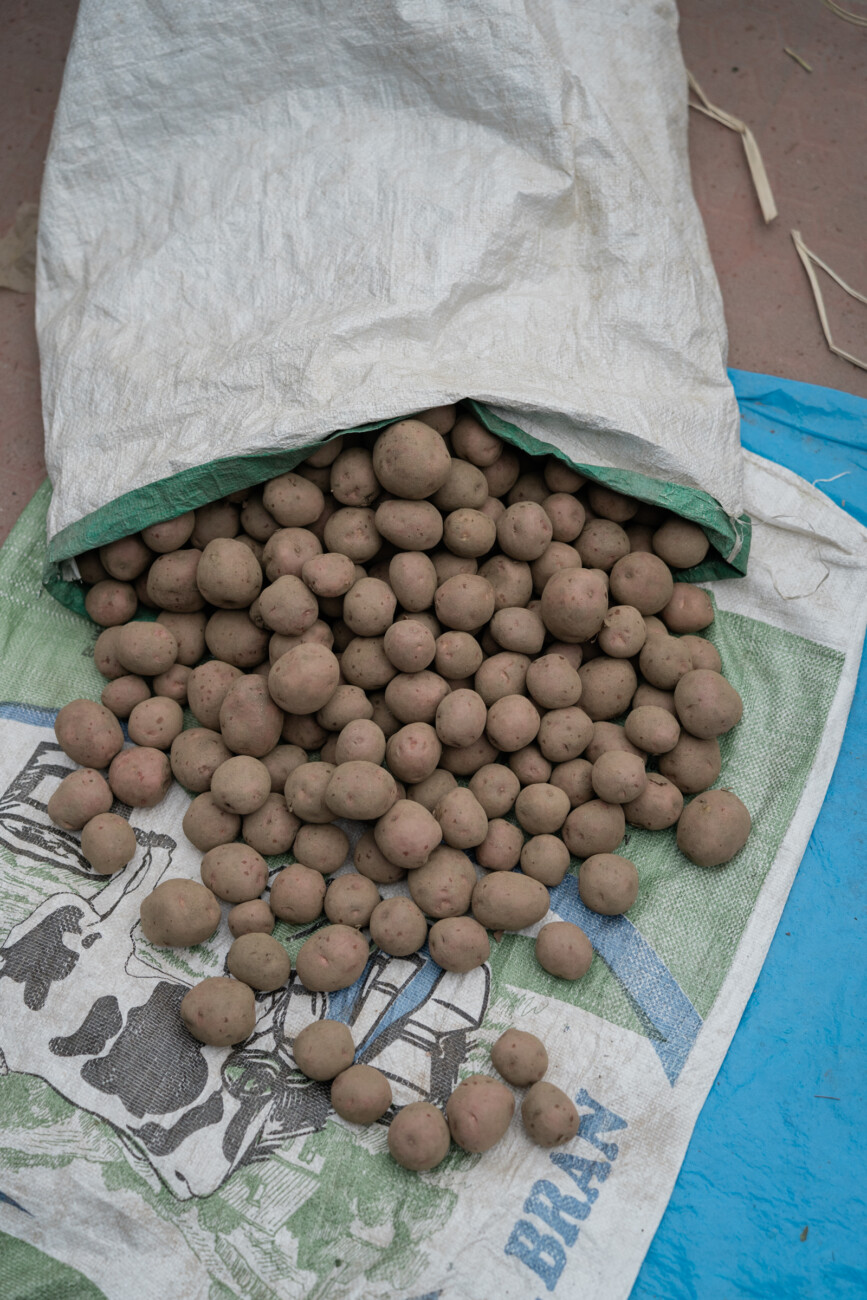
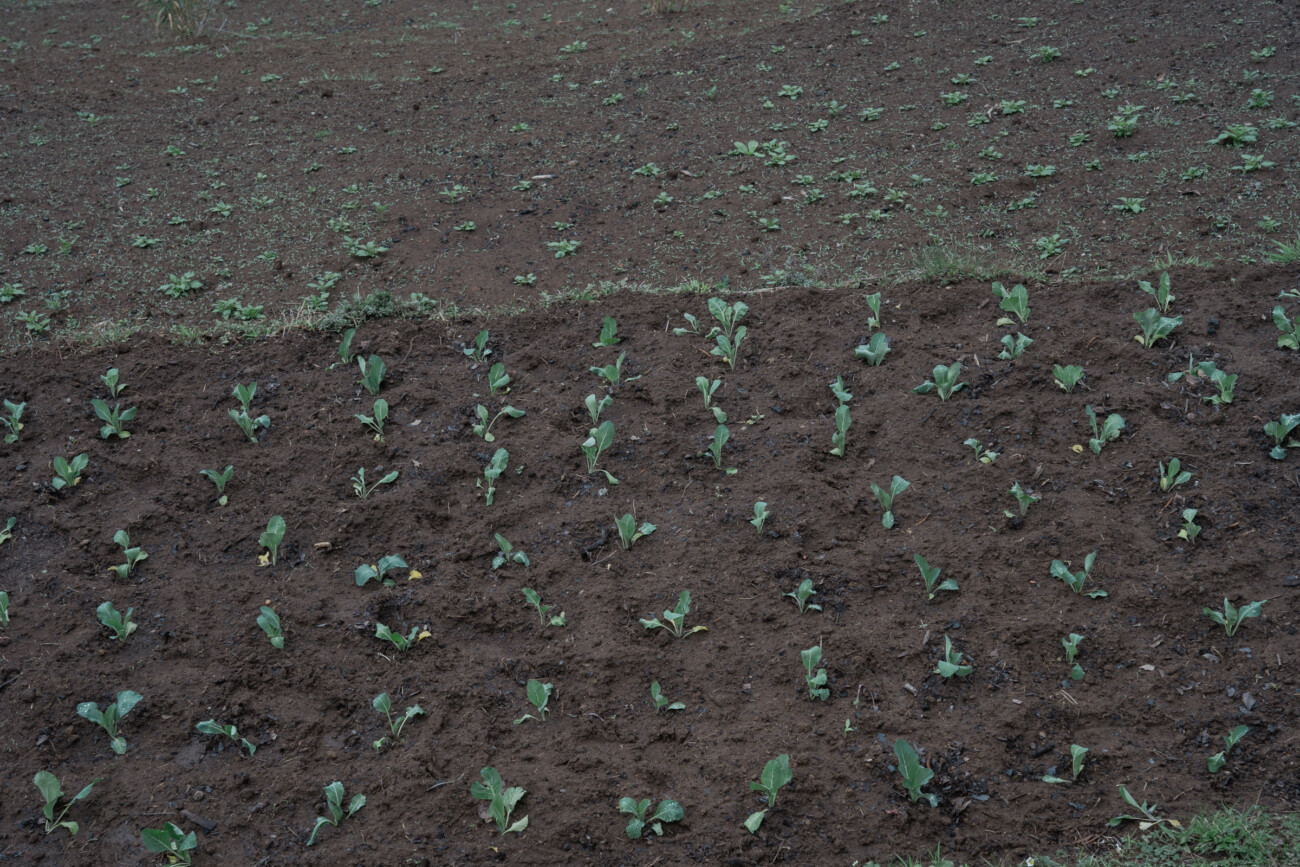
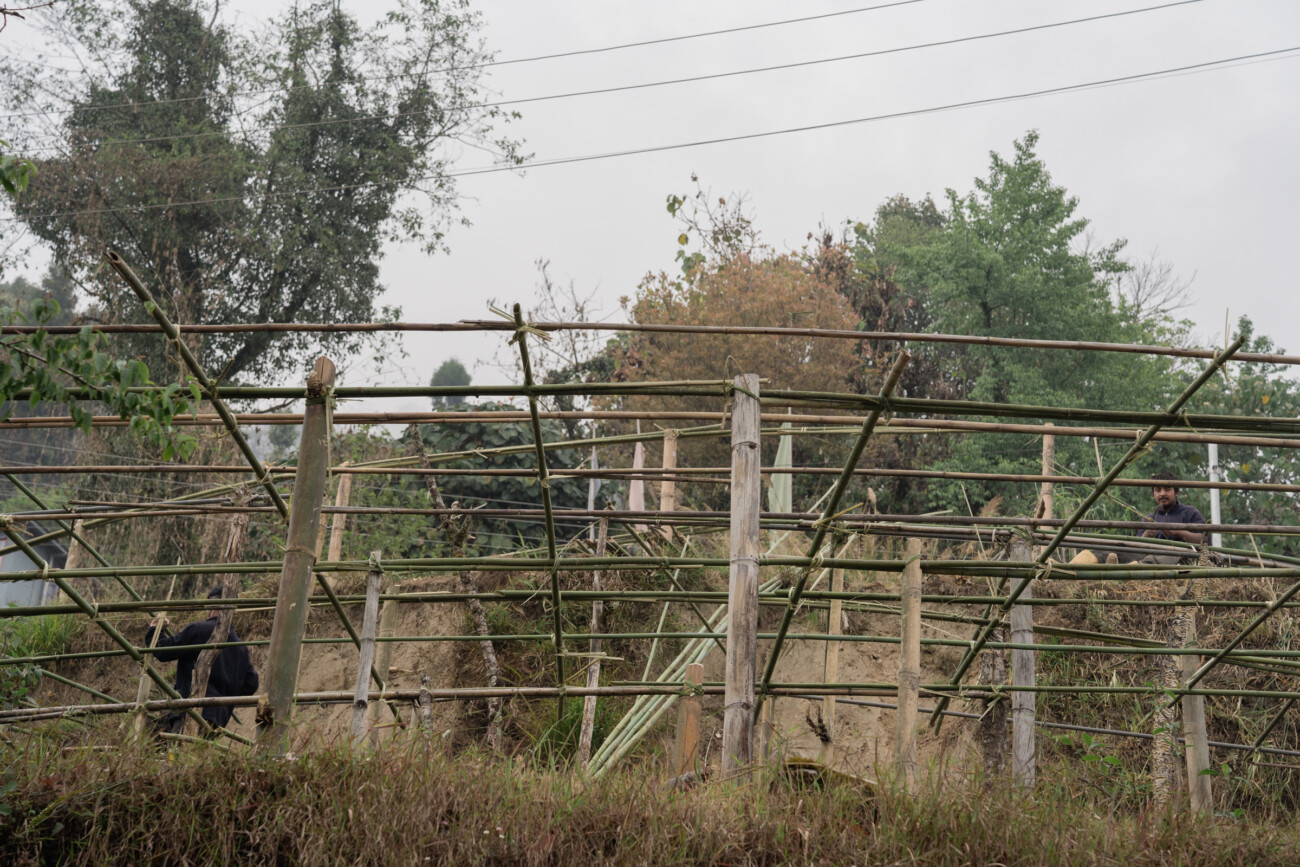
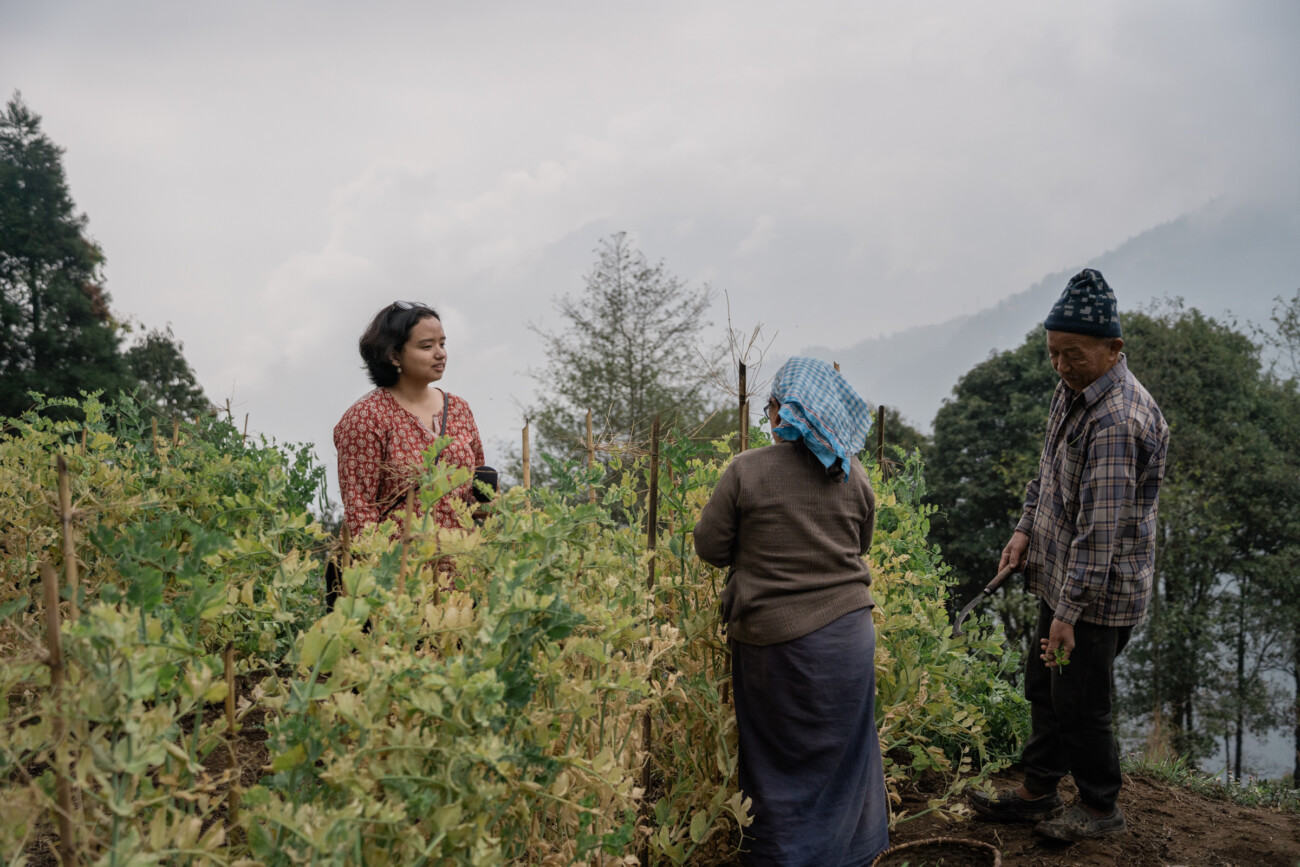
Shradha T K Lama was born and raised in Jorethang, South Sikkim. She completed her BA (2015-18) and MA (2018-2020) in History from Lady Sri Ram College, University of Delhi and her MPhil in South Asian Studies from the University of Cambridge (2020-21).
4 comments on “RETHINKING ORGANIC SIKKIM: SOMBARIA AND SOMBARIA POTATOES”
Leave a Reply
Latest Posts
Latest Comments
No 'Comments_Widget_Plus_Widget' widget registered in this installation.


I could not resist commenting. Very well written!
hello!,I love your writing so so much! share we keep in touch extra about your article on AOL?
I need a specialist in this space to unravel my problem.
Maybe that's you! Looking forward to peer you.
Regarding the potato’s entry in Sikkim please see Kirkpatrick and Hooker. Their notes have now become so precious:
Kirkpatrick, An account of kingdom of Nepaul (1793) ... In the hilly parts of the country, the common potato (Solanum tuberosum) has been introduced …
Hooker, Himalayan Journals (1849) ... The potato thrives extremely well as a summer crop, at
7000 feet, in Sikkim, though I think the root (from the Dorjiling stock) cultivated as a winter crop in the plains, is superior both in size and flavour. ..
In my view the Nepalese settlers brought it with them from their home country. There are so many crops apart from the potato, especially paddy landraces (Takmaro, Thapachini, Birimful, Nunia, Champasari, &c.), ploughs and other implements, stall-fed husbandry, &c.
I wanna write an article about the monastery which located little below Samdruptse Hills and it is known as Ngadak Gumpa.This monastery was basically built in the reign of Choygal Gyurmed Namgyal by Tensung Namgyal as the palace for her Highness Pendi Ongmu.It is also said that who ever visits
here has to make a promise to return again to the Gumpa.In fact the name,Ngadak itself means PROMISE.